FlameOFF® Fire Barrier Paint for Haunted Houses
- Netherworld Haunted House went through a situation that many haunted house owners have experienced. In order to be approved by local authorities, Netherworld Haunted House had to obtain a Class A approval on all vacuformed molded plastics, ABS and fiberglass panels, as well as a Class A in Life Safety Code 101 on the interior finish. While those managing Netherworld Haunted House knew that one cannot operate such a facility without previously developing a safety plan that gets a haunted house approved by authorities, this is not always the case.
- Many of those who plan to make a haunted house are surprised to find out that much of what they want to do is not possible because specific arrangements that were meant to entertain visitors violate fire codes. For example, it’s often the case that a haunted house does not include proper emergency exits, has underdeveloped emergency evaluation plans, poor fire safety systems, and uses combustible decorations. In some cases, starting a haunted house before proper planning can also mean losing money, as many owners only realize that their facility violates fire and other safety codes after they have made significant investments.

Haunted houses are a popular form of entertainment during Halloween and can also be seen during other times of the year. While Halloween-themed occupancies are meant to be scary in an entertaining way, they can be scary in the most unwanted sense if they are poorly designed and do not meet the safety requirements of building and fire codes. Audio and visual effects, combustible materials, low lighting, and confusing means of egress arrangements can all increase the risk of fire and accidents. If you are planning to create a haunted house and make both authorities and visitors happy, you should determine whether the facility meets all the safety standards that apply in your jurisdiction.
Before operating a haunted house, authorities must determine whether the building is safe to function. Stories of haunted houses that have been closed for not being safe are quite common and for a business, this can mean not only economic losses but also losing customer trust. Safety appraisal includes determining whether a building meets fire code requirements, such as those from the National Fire Protection Association (NFPA).
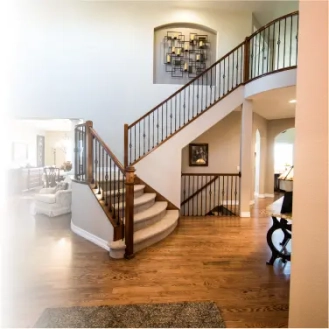
According to NFPA 1 Fire Code, a haunted house is a specific amusement building that can be temporary, permanent or mobile and contain a system that “conveys passengers or provides a walkway along, around, or over a course in any direction as a form of amusement arranged so that the egress path is not readily apparent due to visual or audio distractions or an intentionally confounded egress path, or is not readily available due to the mode of conveyance through the building or structure”.
A fire code violation that is often observed in temporary haunted houses is change of use, that is, an occupancy that used to meet fire code requirements no longer meets them because the arrangement or the mode of occupancy has been changed. In other words, many haunted houses end up closed by the authorities because they are located in buildings that have been designed for other purposes and the owners do not realize that fire safety requirements change once the building structure incorporates audio and visual distractions, special scenery, and combustion materials, among others.
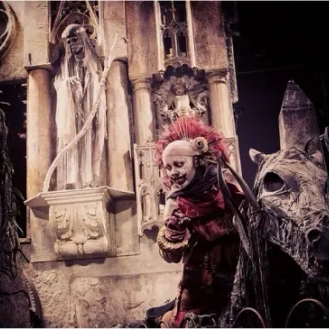
The NFPA 1 Fire Code dedicates Section 20.1.4 to describe the fire safety requirements that haunted houses must follow. In addition to the provisions from this section, haunted houses must also meet the provisions for assembly occupancies. Updating an occupancy to the fire code may include installing new safety systems, fire walls, and fire sprinklers.
Section 20.1.4 of NFPA 1 requires haunted houses to include automatic sprinklers, which can be approved temporary water means in the case of portable houses. Another requirement is smoke detection with an alarm located at a constantly attended location where it can be readily heard if the smoke is detected. Suppression devices such as sprinklers and smoke detection system must provide an increase in the illumination of the means of egress and termination of confusing visuals or sounds.
Interior wall and ceiling
The haunted house must provide exit marking and floor proximity exit signs and where designs of this type are not obvious additional directional exit markings are also required. Interior wall and ceiling finish materials must be Class A and emergency plans must be provided. Other requirements that are not specific to haunted houses may also apply, including those from Section 1.12 (Permits), Section 10.12 (Seasonal), and Section 10.14 (Special outdoor events, fairs, and carnivals).
Haunted houses must also provide emergency access by ensuring that fire lanes are not blocked at any time. Candles and any open-flame lanterns are not allowed in these facilities while self- contained decorative open-flame devices can be used outside of the temporary haunted house with the previous approval from the authorities. Smoking is not allowed in a haunted house, and neither are vapor and smoke-producing devices.
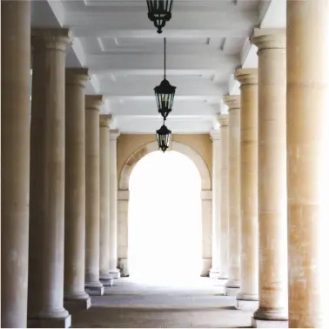
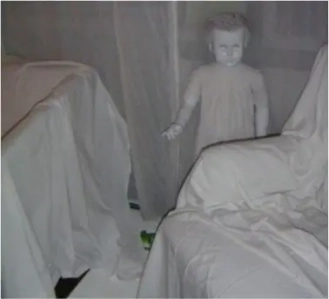
NFPA 701
The NFPA developed NFPA 701, which provides several standards for determining the fire safety of a textile or fabric. While NFPA 701 is not a law, there are several local and state governments that require textiles used in public areas to comply with it. Unless approved by the authorities, pyrotechnics and flame-effects are not allowed inside or outside a temporary haunted house. Decorative materials must be fire retardant and cannot be attached to or suspended from ceilings and all-mounted fire and life safety devices. All decorative materials suspended from ceilings and walls must be noncombustible or meet NFPA 701 criteria.
In accordance with the standards of NFPA 701, artificial vegetation must also be flame resistant or flame retardant. Natural vegetation that is flammable, such as trees, leaves, and vines, cannot be used for decorative purposes in exits, exit access, show windows, building lobbies, and any area where a specific quantity is considered to be a fire hazard.
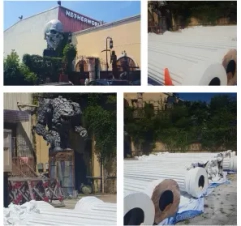
In the case of Netherworld Haunted House discussed earlier, the product of choice for a Class A safety of interior finish was FlameOFF® Fire Barrier Paint intumescent paint. The paint is an eco- friendly and water-based product that has been tested and certified to ASTM E119 fire endurance ratings that require a 1 or 2-hour fire protection and tested and certified to ASTM E84/UL 723, Class “A” flame spread.
FlameOFF® Fire Barrier Paint was applied on fiberglass columns to provide not less than 10 minutes of protection from fire spread. In a short period of time, all the required permits were granted, and Netherworld Haunted House was approved by the authority having jurisdiction. If the owners of the facility would have not known about the fire requirements that applied in their jurisdiction, the outcomes could have been substantially different.
Intumescent paint
Intumescent paint works by swelling for up to 50 times the original thickness of the paint in reaction to high temperature, insulating the substrate and, consequently, slowing the spread of fire. While some walls and other building materials are fire-resistant when purchased, others require specific treatments in order to make them fire retardant. Even when a material is fire resistant , intumescent paint can be used to increase the fire rating of the material in question. A flame-resistant material is one that self-extinguishes and does not melt when exposed to extreme heat. A fire retardant material, on the other hand, is one that has been chemically treated to self-extinguish.
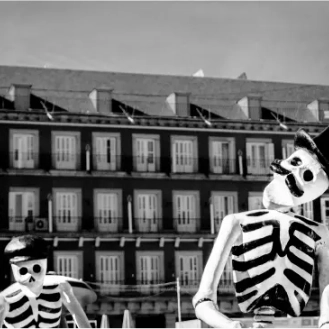
Fire-retardant intumescent paint can be a convenient solution when planning a strategy to ensure that a haunted house which includes different types of materials will meet all code requirements, as the product can be applied to different materials in order to increase the time of protection from fire spread. When using intumescent paint, it’s important to consider that the product works together with the substrate and, consequently, the results will also vary according to the substrate.
After purchasing intumescent paint, some may want to test samples of the items that need to be flame retardant before applying it to the rest of the material. Those who choose this option need to consider the importance of fully following the instructions recommended by FlameOFF® Fire Barrier in order to ensure the treated element will reach the expected result. If any issues arise during the application of the product, we recommend you contact us and we will do our best to help.